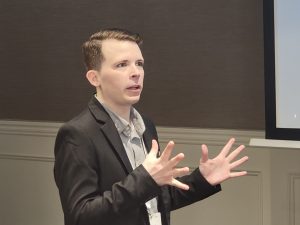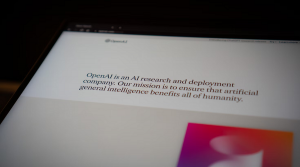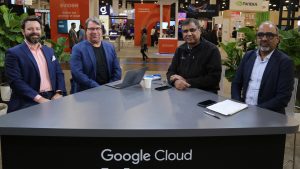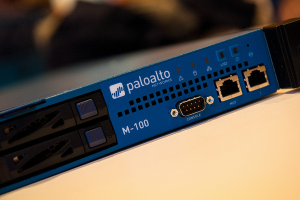NetApp, Internet of Things + Consumer Cloud : Interview with Val Bercovici
![]() NetApp is the last pure play “storage company” standing. Storage as we’ve known it for the past twenty years is over. When it comes to Big Data and cloud computing there isn’t a slam-dunk winner right now. NetApp, Cloudera, Hortonworks, Amazon, Google, EMC — wherever Wall Street places its bets by no means is a guarantee. Not only is the storage space in the middle of a titanic shift right now, but there happens to be a Hollywood-Summer-Blockbuster-worthy “Perfect Storm” rumbling in: the Internet of Things.
NetApp is the last pure play “storage company” standing. Storage as we’ve known it for the past twenty years is over. When it comes to Big Data and cloud computing there isn’t a slam-dunk winner right now. NetApp, Cloudera, Hortonworks, Amazon, Google, EMC — wherever Wall Street places its bets by no means is a guarantee. Not only is the storage space in the middle of a titanic shift right now, but there happens to be a Hollywood-Summer-Blockbuster-worthy “Perfect Storm” rumbling in: the Internet of Things.
NetApp forges on, though. Recently its Clustered Data ONTAP 8.2 release introduced a number of powerful capabilities designed to cut through traditional storage limitations and help IT departments “nondisruptively align the storage infrastructure with changing business and application demands.” NetApp is going all-in on clustering, a gamble that Wikibon co-founder and chief analyst Dave Vellante says can pay off big time given the rapid adoption of software-led architectures in the enterprise.
![]() We recently teamed up NetApp and The Wikibon Project to host the #NetAppChat on the growing market of software-defined storage (SDS), and the value it brings to the enterprise space. NetApp is betting big on SDS with ONTAP and more. NetApp has a history of betting on the right trends, so if you’re asking me to pick a yay or nay on them, I’m definitely in the yay camp.
We recently teamed up NetApp and The Wikibon Project to host the #NetAppChat on the growing market of software-defined storage (SDS), and the value it brings to the enterprise space. NetApp is betting big on SDS with ONTAP and more. NetApp has a history of betting on the right trends, so if you’re asking me to pick a yay or nay on them, I’m definitely in the yay camp.
In seven years, both Cisco (2011 report) and SAP (2013 report) estimate that there will be 50 billion ‘things’ connected to the Internet. NetApp is positioning itself as the last man standing in the pure storage play for the oncoming Internet of Things.
In today’s Profile Series we hear from Val Bercovici, Senior Director, Office of the CTO of NetApp. Below is a recent interview with Val, who says that our current consumer habits are a huge driver of cloud storage growth.
The interview focused on three key areas: enterprise cloud and the enterprise + consumer cloud. Bercovici believes that consumers will continue to be prioritize convenience features over security and that multi-tenant security is going to be a sticking point.
Enterprise Cloud
How will the internet of things impact storage infrastructure?
Storage Infrastructure will become more distributed as a result. Most sensors will maintain a small amount of local storage on solid-state media for ruggedness. They will collect and filter data before consuming wired and wireless bandwidth to transmit data to centralized storage grids in back-end data centers. Those data centers will be populated mostly by high-capacity spinning disk drives due to their continued economic advantages for retaining Big Data. Consolidated management views of these distributed hybrid storage infrastructures will maintain the required low logarithmic ratio between cost of managed storage relative to its capacity.
The Internet of Things means more sensors and devices, and thus more data — where does security lie at the storage level? With the user, or with the IT department?
![]() To the maximum extent provided by law, the user should be able to define the parameters of data collected about them and on their behalf. The IT department should get involved once multiple apps process sensor & device data. At that point multi-tenant security policies will be most scalable and efficiently implemented at the storage level.
To the maximum extent provided by law, the user should be able to define the parameters of data collected about them and on their behalf. The IT department should get involved once multiple apps process sensor & device data. At that point multi-tenant security policies will be most scalable and efficiently implemented at the storage level.
Enterprise & Consumer Cloud
How does the consumerization of IT impact the cloud storage market? What will be the security, privacy and infrastructure challenges?
This is a huge driver of Cloud Storage growth as the vast majority of Consumer apps are Cloud-based. Security & Privacy challenges will center around logical abstraction of customer data from the physical media it is stored on. Case in point if user data which must be shared with authorities sits on the same device-encrypted drive as non-requested neighbor user data, how can you protect the unrequested data if the key to the entire drive is provided? The answer lies in logical (object) vs physical (drive) encryption for multi-tentant Cloud data. This functionality requires advanced storage infrastructure which provides secure multi-tentant data volumes for multiple apps serving multiple users & groups.
How can storage services & marketing be used to attract the consumer market at both the enterprise and/or consumer cloud?
Enterprise Cloud customers will continue to focus on data governance issues, including advanced auditing functionality, data leak prevention and long-term retention issues where the data may easily outlive the Cloud Storage provider and underlying storage media / technology. Mitigating risk of data lock-in to specific Cloud Storage providers via Cloud Brokerage functionality will also become an Enterprise Cloud Storage core competency. Consumers on the other hand will continue to be prioritize convenience features over security. Marketing simplicity and frictionless Cloud Storage experiences will drive maximum market share in this segment.
A message from John Furrier, co-founder of SiliconANGLE:
Your vote of support is important to us and it helps us keep the content FREE.
One click below supports our mission to provide free, deep, and relevant content.
Join our community on YouTube
Join the community that includes more than 15,000 #CubeAlumni experts, including Amazon.com CEO Andy Jassy, Dell Technologies founder and CEO Michael Dell, Intel CEO Pat Gelsinger, and many more luminaries and experts.
THANK YOU













